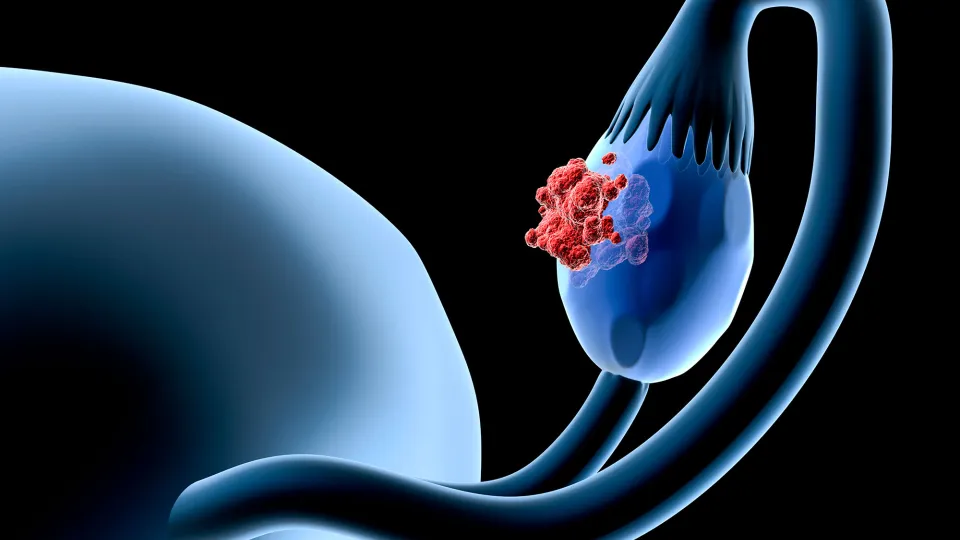
Vern L. Schramm, Ph.D.
- Professor, Department of Biochemistry
- Ruth Merns Chair in Biochemistry
Area of research
- Enzymatic transition states are solved by isotope effects and quantum chemistry. This knowledge permits drug design for cancers, antibiotics and other disorders. Protein dynamics in catalysis is a second focus.
Phone
Location
- Albert Einstein College of Medicine Jack and Pearl Resnick Campus 1300 Morris Park Avenue Golding Building 301 Bronx, NY 10461
Research Profiles
Professional Interests
Enzymes catalyze virtually all of the chemical transformations necessary for biological life. Knowledge of the transition-state structure of enzymatic reactions permits the design of powerful inhibitors. Methods have been developed in this laboratory for the experimental determination of the geometric and charge features which characterize enzymatic transition states. This information is then used for the logical design of transition-state inhibitors which have the potential to be new biologically active agents. For example: Human genetic deficiency of purine nucleoside phosphorylase causes a specific T-cell insufficiency. Our inhibitors of this enzyme are powerful anti T-cell agents. One of these (Immucillin-H, aka Forodesine) has been approved for use against peripheral T-cell lymphoma in Japan. Phase II clinical trials have been completed for gout using our second-generation inhibitor. Other inhibitors in the same family show antiviral properties and have been in clinical trials against Covid-19 and the Yellow Fever virus.
Ongoing projects:
Drug design by transition state analysis includes SAMHD1, a rare triphosphohydrolase activity. SAMHD1 inhibition has potential to enhance T-cell anticancer outcomes. The privileged enzyme-reactant geometry at the transition state will be enlisted as an inhibitor design element. Drug candidates designed to stabilize the SAMHD1 protein geometry at the transition state will be powerful inhibitors. Chemical screening with fragment libraries, some with covalent potential, coupled by click chemistries, will be used in combinatorial inhibitor design as an alternative approach. SAMHD1 inhibitors, used in combination with Forodesine, are expected to provide improved therapeutic approaches to the spectrum of T-cell malignancies.
Methylthioadenosine phosphorylase (MTAP) uniquely recycles methylthioadenosine (MTA) in humans. The 15% of MTAP-deleted (MTAP-/-) tumors are uniquely sensitive to inhibition of MAT2A or PRMT5, a synthetic-lethal approach to cancer therapy. Over a dozen clinical trials with MAT2A and/or PRMT5 inhibitors target 15% of human tumors that are MTAP-/-. However, 85% of patients have MTAP+/+ cancers. Pharmacological MTAP inhibition can convert MTAP+/+ tumors to the MTAP-/- phenotype. We developed MTAP transition state analog inhibitors with picomolar efficacy and their prodrugs to optimize pharmacodynamics. Our MTAP inhibitors are highly specific, non-toxic agents that recapitulate the MTAP-/- phenotype in otherwise isogenic cells. MTAP inhibitors have potential to augment MAT2A and/or PRMT5 inhibitors to all cancer patients.
S-Adenosylmethionine recycling and methyl transfer reactions are central to the epigenetic control pathways regulating growth, development, gene expression and cancer. PRMT5 and PRMT1 are targets for transition state analysis.
Resistance-proof antibacterials: Transition state analogues of Helicobacter pylori MTAN have potential as agents for treating stomach ulcers and for preventing stomach cancer, without disrupting the human gut microbiome. Steps toward implementation include animal efficacy studies, toxicity testing, resistance potential and gut microbiome analysis. Clostridioides difficile (C.diff.) infections are an urgent threat (CDC Antibiotic Resistance Threats Report) because C.diff. toxins kill colon cells. We are discovering and developing of transition state analogs to neutralize the toxins and prevent colon tissue damage.
Emerging cancer targets (DNPH1, UPP1 and ART1) exhibit chemistries optimal for design of transition state analogs. Intrinsic kinetic isotope effects and computational chemistry will provide bond geometry and electrostatic potential maps to design tight-binding transition state analogs. Our long-time chemistry synthetic team in New Zealand provides chemical synthesis of potential inhibitors for their cognate targets.
Students in this laboratory can receive training in enzymology, catalysis, protein expression, inhibitor design, computer modeling, inhibitor synthesis, and in drug metabolism studies in cells and animals. Active collaborations occur with laboratories specializing in NMR, X-ray crystallography, mass spectroscopy, synthetic organic chemistry, cancer and medicine. Projects can be designed to include several of these research approaches through active collaborative research programs.
Selected Publications
- The anti-cancer transition-state inhibitor MTDIA inhibits human MTAP, inducing autophagy in humanized yeast. Coorey NV, Tollestrup I, Bircham PW, Sheridan JP, Evans GB, Schramm VL, Atkinson PH, Munkacsi AB. Dis Model Mech. 2025 Jun 1;18(6):dmm052173. doi: 10.1242/dmm.052173. Epub 2025 Jun 30. PMID: 40375736 Free PMC article.
- Kinetic Mechanism of the Emergent Anticancer Target, Human ADP-ribosyltransferase 1. Groom DP, Lopacinski A, Garforth SJ, Schramm VL. Biochemistry. 2025 May 6;64(9):2077-2088. doi: 10.1021/acs.biochem.5c00105. Epub 2025 Apr 24. PMID: 40273333
- Transition State Analysis of SAMHD1 from Primary 18O, 33P, and Solvent Kinetic Isotope Effects. Ghosh AK, Groom DP, Schramm VL. J Am Chem Soc. 2025 Mar 12;147(10):8852-8863. doi: 10.1021/jacs.5c00521. Epub 2025 Feb 27. PMID: 40014869
- Transition State Analogs of Human DNPH1 Reveal Two Electrophile Migration Mechanisms. Wagner AG, Lang TBD, Ledingham ET, Ghosh A, Brooks D, Eskandari R, Suthagar K, Almo SC, Lamiable-Oulaidi F, Tyler PC, Schramm VL. J Med Chem. 2025 Feb 13;68(3):3653-3672. doi: 10.1021/acs.jmedchem.4c02778. Epub 2025 Jan 16. PMID: 39818772
- Isofagomine Inhibits Multiple TcdB Variants and Protects Mice from Clostridioides difficile-Induced Mortality. Paparella AS, Brew I, Hong HA, Ferriera W, Cutting S, Lamiable-Oulaidi F, Popadynec M, Tyler PC, Schramm VL. ACS Infect Dis. 2024 Mar 8;10(3):928-937. doi: 10.1021/acsinfecdis.3c00507. Epub 2024 Feb 9. PMID: 38334357
- Combined inhibition of MTAP and MAT2a mimics synthetic lethality in tumor models via PRMT5 inhibition. Bedard GT, Gilaj N, Peregrina K, Brew I, Tosti E, Shaffer K, Tyler PC, Edelmann W, Augenlicht LH, Schramm VL. J Biol Chem. 2024 Jan;300(1):105492. doi: 10.1016/j.jbc.2023.105492. Epub 2023 Nov 23. PMID: 38000655 Free PMC article.
- Phosphate Binding in PNP Alters Transition-State Analogue Affinity and Subunit Cooperativity. Minnow YVT, Schramm VL, Almo SC, Ghosh A. Biochemistry. 2023 Nov 7;62(21):3116-3125. doi: 10.1021/acs.biochem.3c00264. Epub 2023 Oct 9. PMID: 37812583
- Decreased Transition-State Analogue Affinity in Isotopically Heavy MTAN with Increased Catalysis. Brown M, Schramm VL. Biochemistry. 2023 Oct 17;62(20):2928-2933. doi: 10.1021/acs.biochem.3c00434. Epub 2023 Oct 3. PMID: 37788145 Free PMC article.
- Cell-Effective Transition-State Analogue of Phenylethanolamine N-Methyltransferase. Mahmoodi N, Minnow YVT, Harijan RK, Bedard GT, Schramm VL. Biochemistry. 2023 Aug 1;62(15):2257-2268. doi: 10.1021/acs.biochem.3c00103. Epub 2023 Jul 19. PMID: 37467463 Free PMC article.








